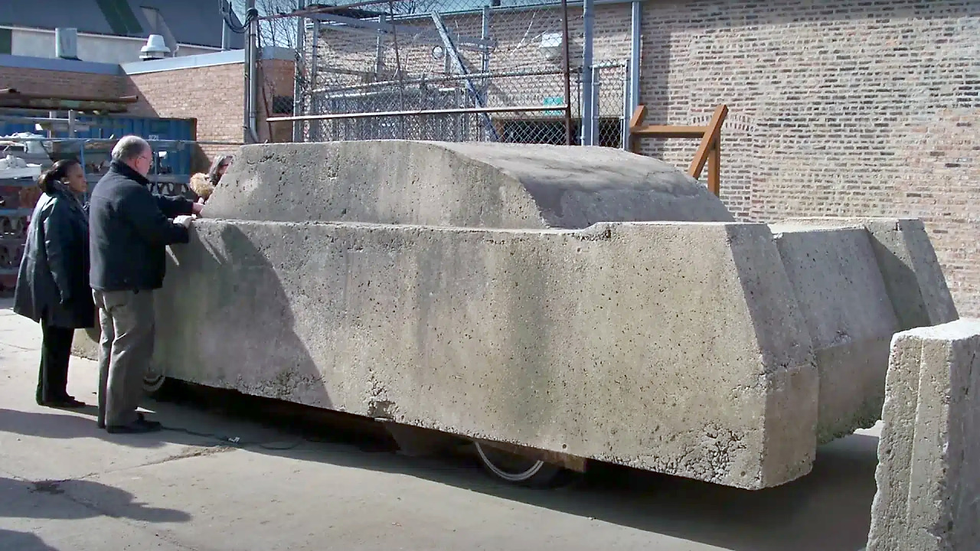1973 Audi Karmann Asso di Picche by ItalDesign
- Story Cars

- Jun 29, 2021
- 3 min read
The 70s and 80s were some of the most vibrant times in automobile history. Automakers were all-in for innovation, and all types of mad ideas were tried out to stand apart from the competition. Performance and comfort levels were seeing a rapid evolution. But in terms of design and looks, not much input was given in terms of efficiency, and it was all solely about turning heads and standing apart.
But Karmann and Italdesign, two very prominent names, decided to join hands and build a car sourced from Volkswagen that focused on aerodynamic efficiency. This was called the 'Asso di Picche' Concept and was based on the game-changing Audi 80. As most of its components came from an Audi, they decided to give it the 4-rings. 'Asso di Picche' is an Italian phrase translated to Ace of Spades. Their main idea was to create a sporty, 2-door, 4-seat coupe that was efficient in all aspects, especially design.
And the 1973 Audi-based Karmann Asso di Picchu wasn't their first work together as the 1971 Volkswagen Karmann Cheetah by Italidesign was a modified 2-seater VW Beetle with a soft-top, and it looked sharper! This car never proceeded past the concept stage but was very influential with the design of many iconic cars in history. Giugiaro later on improvised and built a trio of "Ace" concepts, with the 'Asso di Picche' being the first. The other two were Asso di Quadri (Ace of Clubs), based on a BMW 320i, and the Asso di Fiori (Ace of Clubs) based on the 1982 Isuzu Piazza/ Impulse. The 1973 Audi-based Karmann Asso di Picche by ItalDesign was a wedgy take on the future of the sports coupes, and it had a lasting impression.
This concept was not decided to flaunt the 'Audi' badging as Volkswagen was the point of contact for both Karmann and ItalDesign for this project. The radical design was thanks to previous Giugiaro concepts that gave it angular looks and the unmistakable wedgy approach. It is only because of the dense amount of shared parts with an Audi that it got the badging.
The Italians can never go wrong with making cars dramatic and beautiful. Combining that with tried-and-tested German engineering gave the Asso di Picche a well-rounded character and inspired the next wave of automobiles. It is one of the rare examples of fine Italian art and sturdy German engineering. And all of this was possible because of the sweet relationship between Giorgetto Giugiaro, the founder of ItalDesign, and the Volkswagen Group, thanks to their tasteful, creative investments in cars like the VW Golf, Passat, and Scirocco.
The Asso di Picchu was based on an Audi 80. It used the same 1.3- or 1.5-liter inline-4 gasoline engines and packed a 4-speed manual gearbox, sending power to the rear wheels. The suspension, brakes, and mechanicals were unchanged, but the body was shorter and lighter than the Audi 80, which clearly would have given it an advantage in handling. The interior saw vast changes and had a quirky luxe appeal. The instrument cluster and center console was replaced by cylinder-shaped structures that grouped all the switches and dials into a clean layout. The cabin was heavily laid out with leather and had door pockets like hanging handbags. The final quirk piece here was the mono-spoke steering wheel which went well with the radical exterior design.
Giugiaro has had an addictive obsession with wedges, but we aren't complaining. The Audi Karman Asso di Picche also took a wedgy approach under his design house, ItalDesign, known for quite a few quirky and sci-fi creations. This 2-door coupe had a fastback rear section and a long pointy nose. The hood also housed a neatly offset scoop that was most likely to provide air to the intake system. The design was sharp, but a fair amount of muscles were also added to give it an intimidating look. It was presented at the 1973 Frankfurt Motor Show
While this wedgy Audi never made it past the concept stage, it influenced the design of many iconic cars. Giugiaro admitted that the Asso di Picche's radical design language was a major source of the iconic Lancia Delta's design. This muscular wedge was also found in other concept cars like the Maserati Medici and the Lancia Megagamma. This joint project had unknowingly and humbly started a new revolution in automobile design.
Sources: Wikipedia.org, Dyler.com, Motor1.com, Supercars.net, Rawwhenparked.net
Images: ItalDesign; Karmann


























































Comments